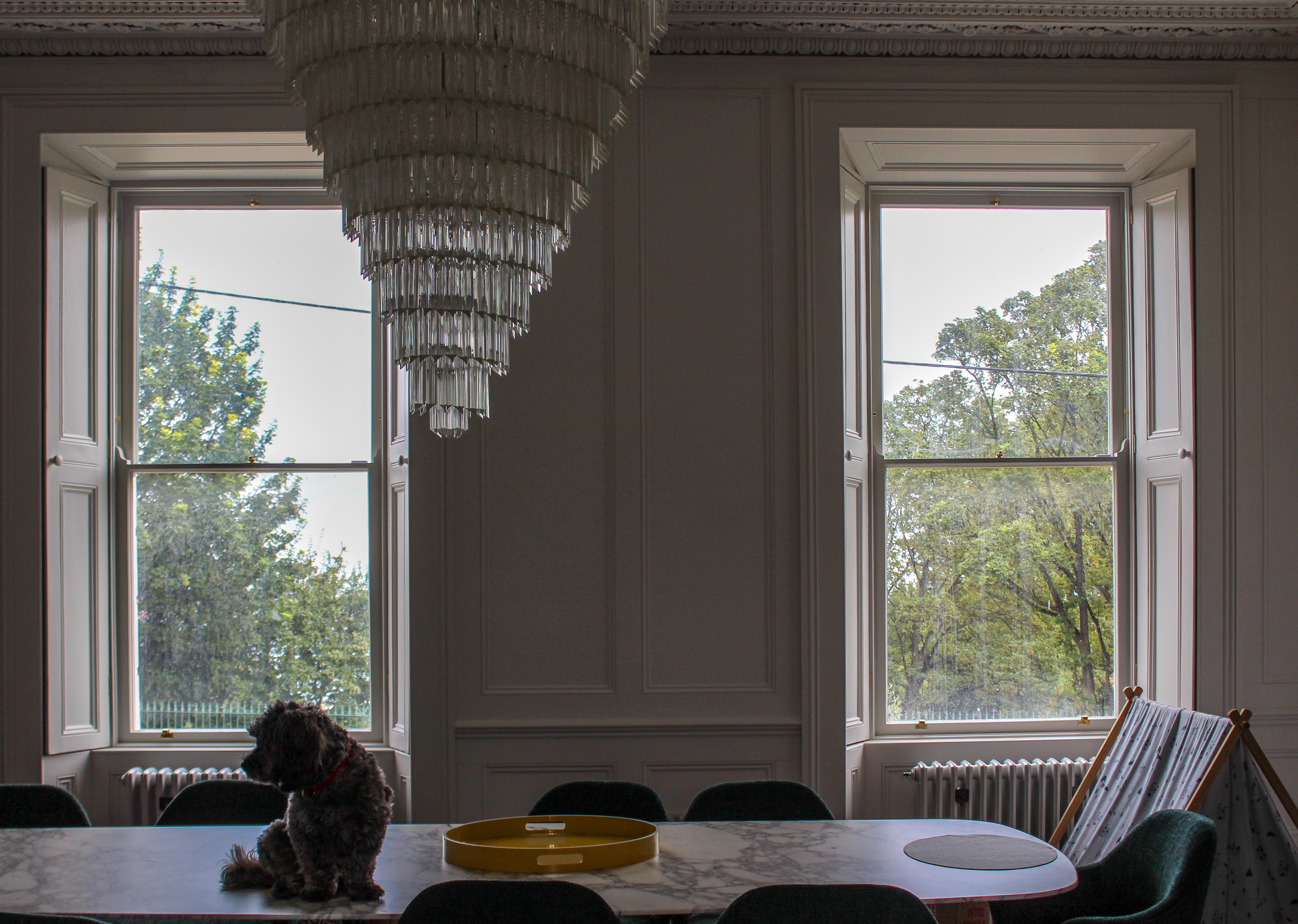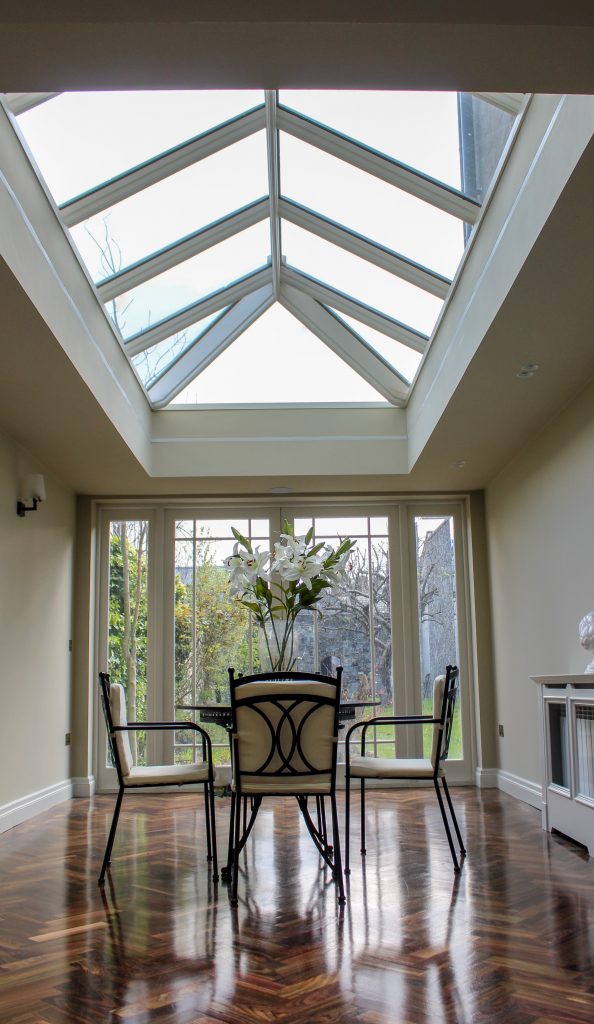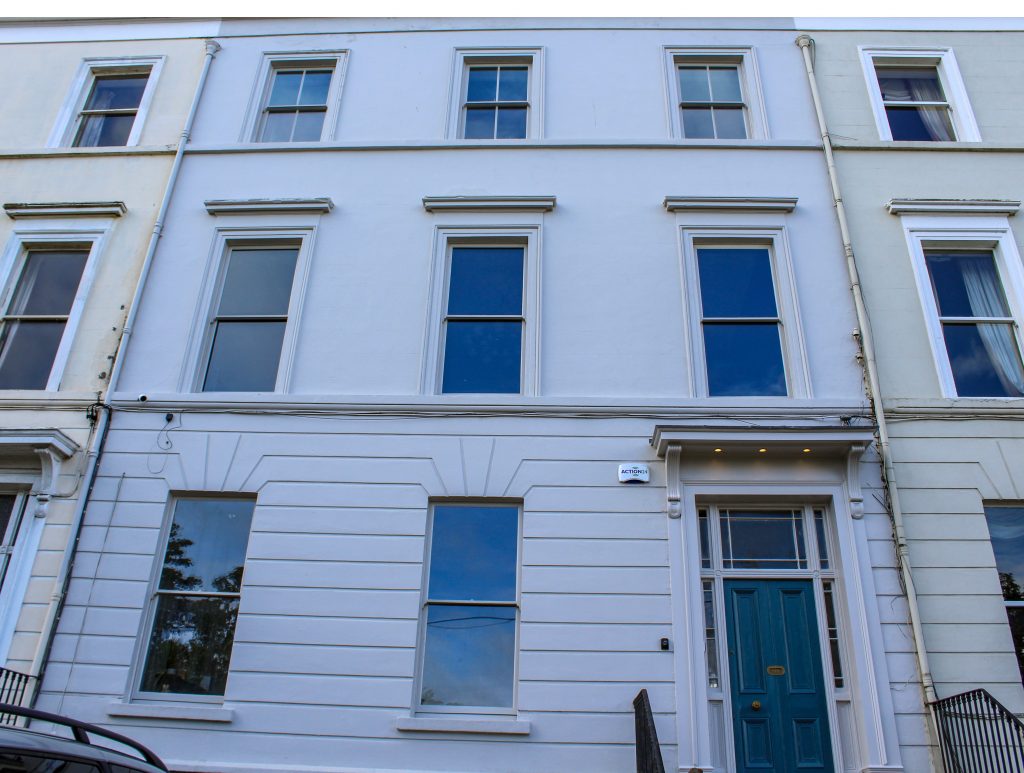
Before and After – a glorious Victorian window restoration
24/09/2019
How to choose your window frame colour
10/10/2019Windows are one of the most important architectural elements in a building. They give the building life and personality by allowing both light and air to enter.
There is a huge choice in frames and glazing and you should bear in mind the requirements of the windows in terms of weather, safety, thermal efficiency and aesthetics.
Timeless Sash Windows are an Irish joinery manufacturing and fitting timber sash windows in Dublin and throughout Ireland.
In this post we will discuss
-
Our Window Products for specification
-
Aesthetics
-
Materials and Performance
-
Glazing Specifications
-
Energy Efficiency
-
Sustainability and Window Design
-
Case Studies
Our Products
As a manufacturer of bespoke timber windows, we can give you a short explanation of the types of windows that you can choose from:.
- Sash Windows – A sash window is a vertically sliding window. Two sashes act as a frame for the internal glass and glazing bars. Draught proofing, the use of double glazing and enhanced timber quality improve the traditional designs to comply with the latest energy efficiency requirements. Double-hung sash windows have both sashes operational. These are in contrast to single hung sash windows which incorporate one fixed sash and one moving.
- Casement Window – A casement window has a casement sash attached to a timber frame by hinges on one side and opens outwards or inwards. Casements are usually hinged at the side but they can be hinged at the top or the bottom of the window (awning/hopper windows). The fact that there isn’t as much timber in casement windows means that they are superb at lighting up rooms. Moreover, very low air leakage rates are an important consideration. These include French windows.
- Fixed or Picture Window – A fixed or picture window has no moving parts and does not open. Its primary function is to let in light. Bay windows often feature one or more fixed windows in their organisation.
- Bay and Bow Windows – A bay window is a generally 3 flat windows with a central picture window and 2 side windows. A bow window, on the other hand, is a series of 5 or 7 windows that are curved to form an arch.
- Skylights – Skylights often come with remote-control blinds or coated glass to minimize UV exposure.

Aesthetics
- Sash frames – pay attention to dimensions and proportions of the windows. Early windows are typically much heavier than more recent windows, reflecting advancement in joinery and glazing techniques. This should be taken into account according to the age of the building so that they are in harmony.
- Glazing Bars – the style of historical glazing bars changed according to architectural fashion in recent centuries. Lambstongue, astragal and ovolo are the predominant glazing bars in Ireland.
- Sash horns – in sliding sash windows, sash horns are prevalent in windows from the late 18th and 19th centuries. New windows tend to continue to include this style.
- Texture – A variety of textures provide visual depth and levels of transparency according to use and design of the glass.
- Reflectivity – Various coatings and films can finish glazing with different functionality. Depending on the finish these can provide benefits for solar energy and reduce interior UV damage.
- Opacity – Decide the use of the space for which the window is designed. Glass can be treated to have it transparent, translucent, opaque or anywhere in between. We have also fitted electric glass that alters between states by touch.
Materials and Performance
Aluminium, timber, uPVC and composites are some of the materials used to make windows. They all have their own advantages and disadvantages depending on the location and functionality of the building. They reflect on the property’s age and style. Furthermore, you should keep in mind that the frame also has a role in the thermal performance and sustainability of the window.
- Timber – Solid timber frames give a natural and warm aesthetic and can be painted dual or single colours to conform with design. Modern advancements mean that annual maintenance traditionally associated with timber windows is greatly reduced. Additionally, they come from a sustainable, carbon neutral resource and can be repaired/recycled in the event of eventual decay.
- uPVC – These are maintenance free and cheaper yet typically thicker sections. Typically, they cannot be repaired or recycled during their lifespan. However, they are lightweight and offer a range of U-values.
- Aluminum – Aluminum frames are strong, low maintenance and great for achieving slim modern profiles. However, on its own, aluminum is a poor insulator and therefore requires additional insulation products.

Window Glazing
The purpose of the windows and their location will dictate the glazing choices.
- Double Glazing and Slim Glazing – The double glazed units are filled with Argon gas, Krypton gas or Xenon gas. A warm edge Swiss V spacer bar seals the units.
- Pilkington K Glass – This is a low E – glass that is designed and produced by Pilkington in the UK.
- Pilkington Spacia Glass – Pilkingotn Spacia glass is a great solution for old windows where a narrow section is only possible. It is an insulating glass unit that is made up of a low E outer glass and an inner pane of clear float glass with a vacuum of just 0.2mm in between.
- Acoustic Glass – In some properties, noise reduction is a priority. In these situations we can use high quality acoustic laminated glass such as Pilkington Optiphon. This can result in a reduction of noise levels up to 50 decibels.
- Safety Glass in Windows and Doors – In addition to double glazing, there are building regulations that stipulate the use of safety glass in windows up to 800mm from the floor level.
- Fire Safety Glass – Some windows require specialist fire safety glass. Lamination during production and offers various degrees of fire resistance from 30 – 60 minutes for fire safety glass.
- Historic Glass – Where possible during window conservation we keep the original glass. Our glass supplier can also produce double glazed units with crown glass as the outside pane of glass.
- Stained Glass / Leaded Glass – We work closely with a stained glass specialist company on these projects and the results are very impressive.
- Low-Emissivity (Low-E) Glass: Low-E glass has a microscopically thin, transparent coating that reflects long-wave infrared energy and thus has lower emissivity.
Energy Efficiency
Bear in mind the thermal efficiency of the window with regard to U-Values of the glass and also the entire window including the frames and seals.
- U value measures the insulation of the whole window (glazing and frame) or door, or how well it keeps the heat in in the cold weather. The lower the value, the better the insulation and the greater efficiency of the window.
- Solar factor measures the transmittance of sunlight (both visible and non-visible) through the window. In the non-visible spectrum UV light entering causes fabrics to fade and Infra red light is the heat energy. The visible light is what we can see. Low E glass, or low emissivity, lets the sun in but reduces how much escapes. This is called solar gain.
- Air Leakage measures the tightness of the seals. A well made window will have little or no air leakage. Again here, the lower the number is an indicator of better performance.

Sustainability and Window Design
Looking forward to the future of the planet and the comfort of the population, our window and door products are the ideal solution. First and foremost, we repair and refurbish where possible. We retain as much of the original timber and glazing. This has a dual purpose – protecting our resources and heritage as well as being the quickest solution for the homeowner. Secondly the timber that we use is all FSC certified, meaning that it comes from sustainable forests. Thirdly our joinery recycles the waste product, sawdust, into reusable pellets for fuel.
Case Studies
- THE OFFICERS MESS, CLANCY QUAY
Highly Commended in the RIAI Public Choice Awards 2019 for Adaptation and Re-use:
Architects: O’Mahony Pike with Lindsay Conservation Architects
Clients: Kennedy Wilson Real Estate PLC
Window contractors: Timeless Sash Windows
This project included the conservation and refurbishment of the windows in 9 historic army barracks in Dublin city.

Clancy Quay refurbishment

Clancy Quay – interior
- VICTORIAN TERRACE REFURBISHMENT, DUN LAOIGHRE
Principal contractor: Ken Leonard Construction
Window and door contractors: Timeless Sash Windows
This project included 18 new windows, 5 refurbished windows, 5 new doors and 1 modified door.

Window converted to garden door

Victorian restoration – front facade
- 3 HENRIETTA STREET, DUBLIN
Project management: Ian Lumley and Pat Wigglesworth
Window contractors: Timeless Sash Windows
This project included the refurbishment of all windows, architraves and shutters to full working order.


For further details and case studies, please refer to our blog. To receive further documentation, contact our office on 046-9023323 or by email [email protected].
Published 26th September 2019.
Jennie Ritchie, Timeless Sash Windows.




